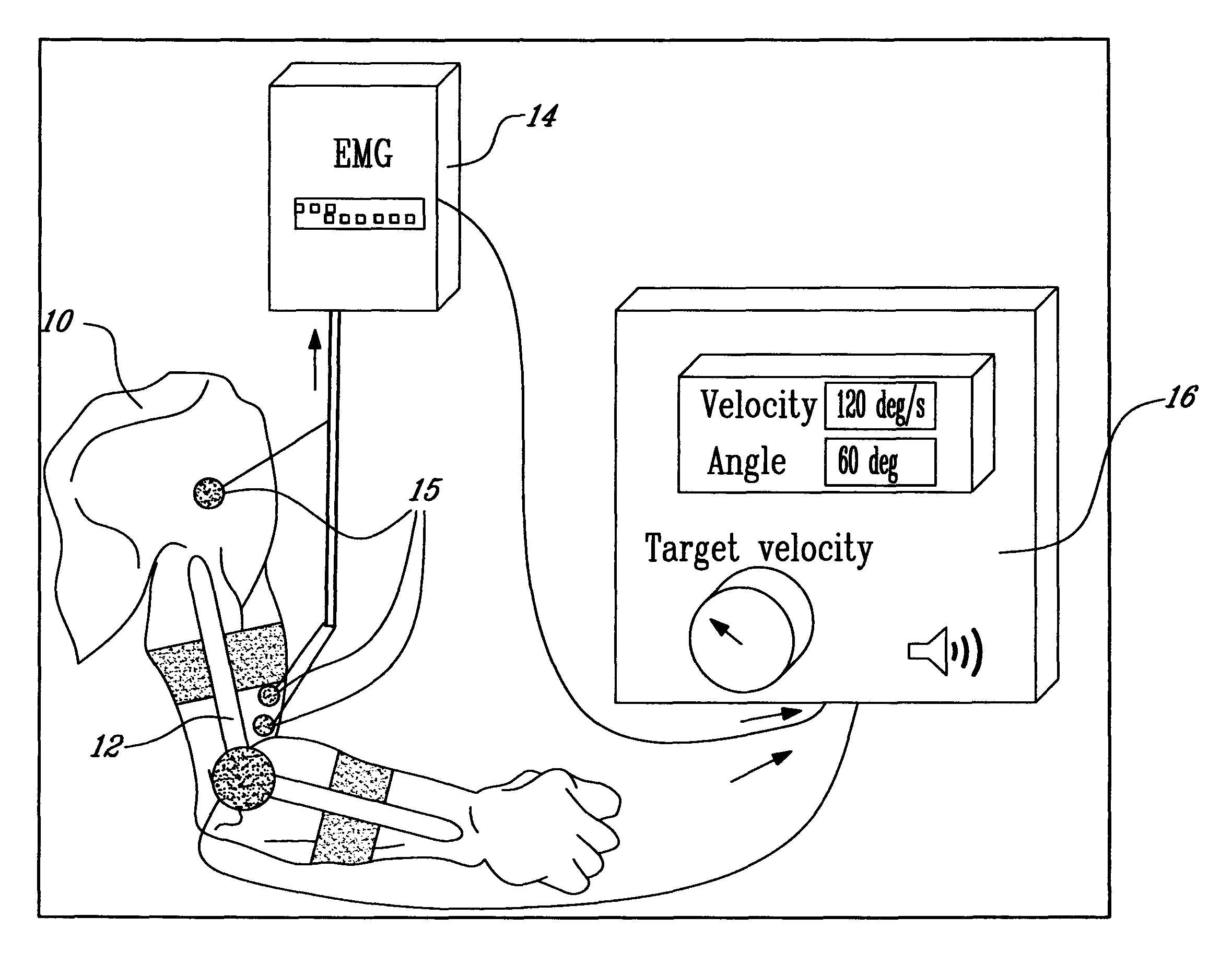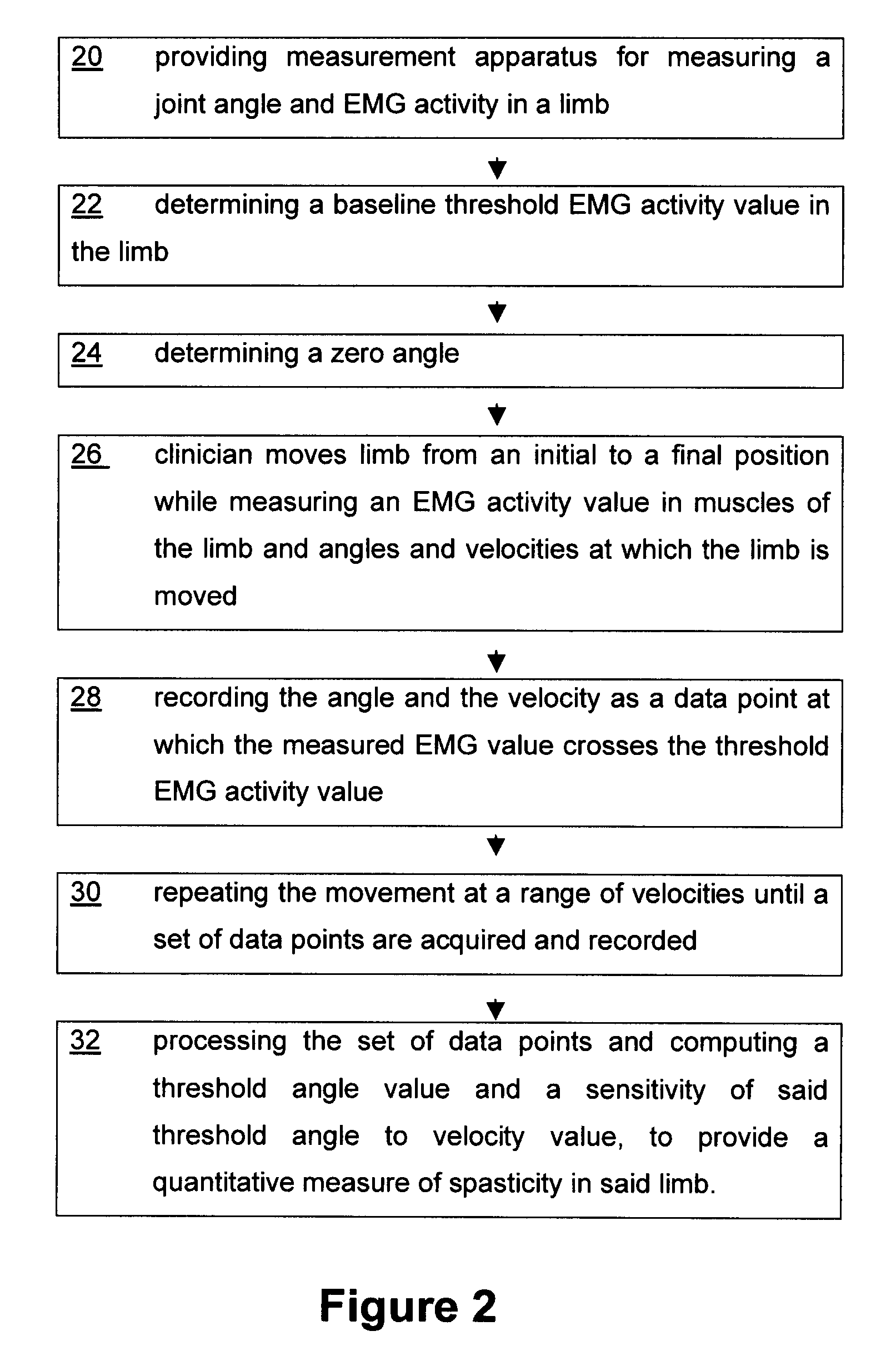Method and apparatus for determining spasticity
a technology of spasticity and measurement method, applied in the field of muscle activity assessment, can solve the problems of spasticity affecting the achievement of activities, spasticity affecting the movement of the body, and spasticity affecting the seating position,
- Summary
- Abstract
- Description
- Claims
- Application Information
AI Technical Summary
Benefits of technology
Problems solved by technology
Method used
Image
Examples
Embodiment Construction
[0014]There is provided a method and apparatus that advantageously measures spasticity in an objective and reproducible way. Referring to FIG. 1 a schematic diagram of spasticity measurements being performed on a limb according to an embodiment of the method of the present invention is shown. The set up allows the acquisition of EMG signals, joint angles Θ and angular velocities ω data that are used to provide a quantitative measurement of spasticity. In FIG. 1 an arm 10 is shown in which the elbow (the joint) is bent at an angle Θ. A joint angle sensing device such as a goniometer 12 is attached to the arm to provide angle measurements and muscle activity is monitored by an EMG 14 comprising electrodes 15. The data is processed by data processor 16 to assess spasticity by computing the angle λ at which the onset of the stretch reflex (SR) is triggered. The results may be compared to results obtained for normal individuals or individuals with similar or different diseases.
[0015]In o...
PUM
 Login to View More
Login to View More Abstract
Description
Claims
Application Information
 Login to View More
Login to View More - R&D
- Intellectual Property
- Life Sciences
- Materials
- Tech Scout
- Unparalleled Data Quality
- Higher Quality Content
- 60% Fewer Hallucinations
Browse by: Latest US Patents, China's latest patents, Technical Efficacy Thesaurus, Application Domain, Technology Topic, Popular Technical Reports.
© 2025 PatSnap. All rights reserved.Legal|Privacy policy|Modern Slavery Act Transparency Statement|Sitemap|About US| Contact US: help@patsnap.com



